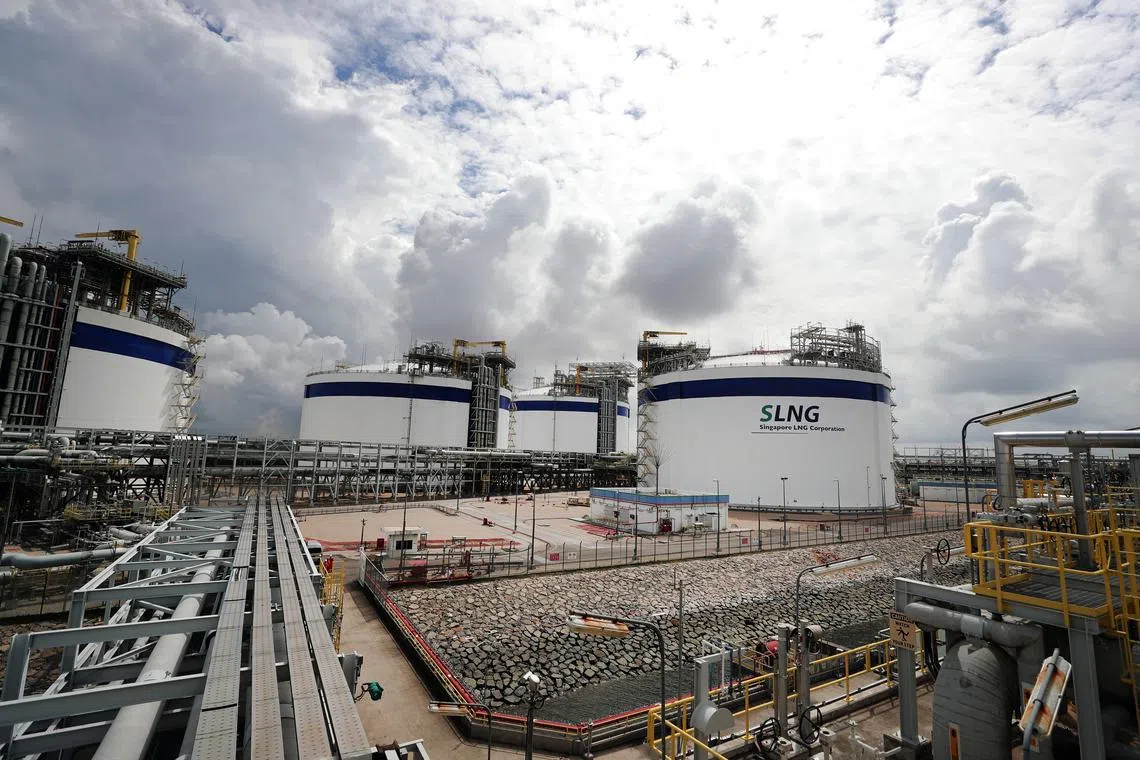New and repowered natural gas power plants must be more efficient, hydrogen-compatible from 2024
Sign up now: Get ST's newsletters delivered to your inbox

The newly announced standards are based on best-in-class technology available in the market today, said the Energy Market Authority.
PHOTO: ST FILE
Follow topic:
SINGAPORE – From 2024, all new and repowered natural gas power plants will need to be 10 per cent more efficient and at least 30 per cent hydrogen-compatible by volume, said the Energy Market Authority (EMA) on Thursday.
New gas engines that integrate low-carbon energy sources such as solar or renewable energy imports, like wind or hydropower, must keep their annual emissions within a certain limit, said EMA.
These emission standards are crucial in the deployment of clean and efficient power generation units in Singapore, said EMA, which will discuss with the industry the new code of practice to enforce these standards.
It noted that over the next decade, new and repowered generation units will be needed to meet increasing electricity demand and replace ageing power plants.
The newly announced standards are based on best-in-class technology available in the market today, said EMA.
“Repowered units are generation units that have undergone significant works to replace their critical components, such as turbines. It is imperative that the new and repowered units use the best-in-class technology available and are as emission-efficient as possible to help reduce the power sector’s carbon footprint,” said the agency.
The emission standards come in two tiers.
Power plants, such as combined-cycle gas turbines, that run regularly must meet Tier 1 standards. Emissions must be kept within 0.355 tonne of carbon dioxide per megawatt-hour of electricity produced – which is 10 per cent more carbon-efficient than existing plants.
Power plants that run only periodically will be subject to Tier 2 standards. Such plants include open-cycle gas turbines that are used to meet peak electricity demand, and new gas engines that integrate different low-carbon energy sources, such as solar or renewable energy imports, like wind or hydropower.
Tier 2 units must keep within an emission cap each year to allow the entry of other generation technologies that may be less efficient but necessary to provide energy security and flexibility in the electricity grid.
The emission allowance limit for a Tier 2 plant is equivalent to a Tier 1 advanced combined-cycle gas turbine, but running at 50 per cent capacity on an annual basis.
To manage their overall emissions, Tier 2 units must limit their operation duration each year to keep within the emission cap, said EMA.
Both Tier 1 and Tier 2 plants will need to be at least 30 per cent hydrogen-ready by volume, with the ability to be retrofitted to become 100 per cent hydrogen-ready in the future.
Hydrogen does not produce any planet-warming carbon dioxide when burned. “This will ensure that Singapore’s new power generation units can further reduce their emissions when hydrogen becomes more commercially viable,” said EMA.
“As Singapore continues to rely on natural gas for energy reliability beyond the next decade, emission standards will future-proof the nation’s power generation fleet and support power generation companies in their decarbonisation journeys,” added EMA.
“The standards will also offer greater clarity to potential investors who are looking to invest in new generation capacity in Singapore.”
It added that it will continue to review and gradually tighten the emission standards to ensure that the power sector is on track to facilitate the Republic’s transition to net-zero emissions by 2050.
Dr David Broadstock, a senior research fellow and lead of energy transition at the National University of Singapore’s Sustainable and Green Finance Institute, said that the new standards will encourage power generation companies to integrate more hydrogen into the natural gas mix. This will allow them to reduce emissions and keep to the stipulated limit.
He pointed out that having two tiers of emission limits is important as different facilities play different roles in regulating system stability under highly variable demand and supply conditions.
“As we move forward with increased levels of low-carbon energy imports in the coming years, the potential for intermittency will grow, and so there may be the need to draw upon Tier 2 facilities. Hopefully, the introduction of the cap will promote new thinking around domestic low-carbon technology solutions for Tier 2 power generation.”


